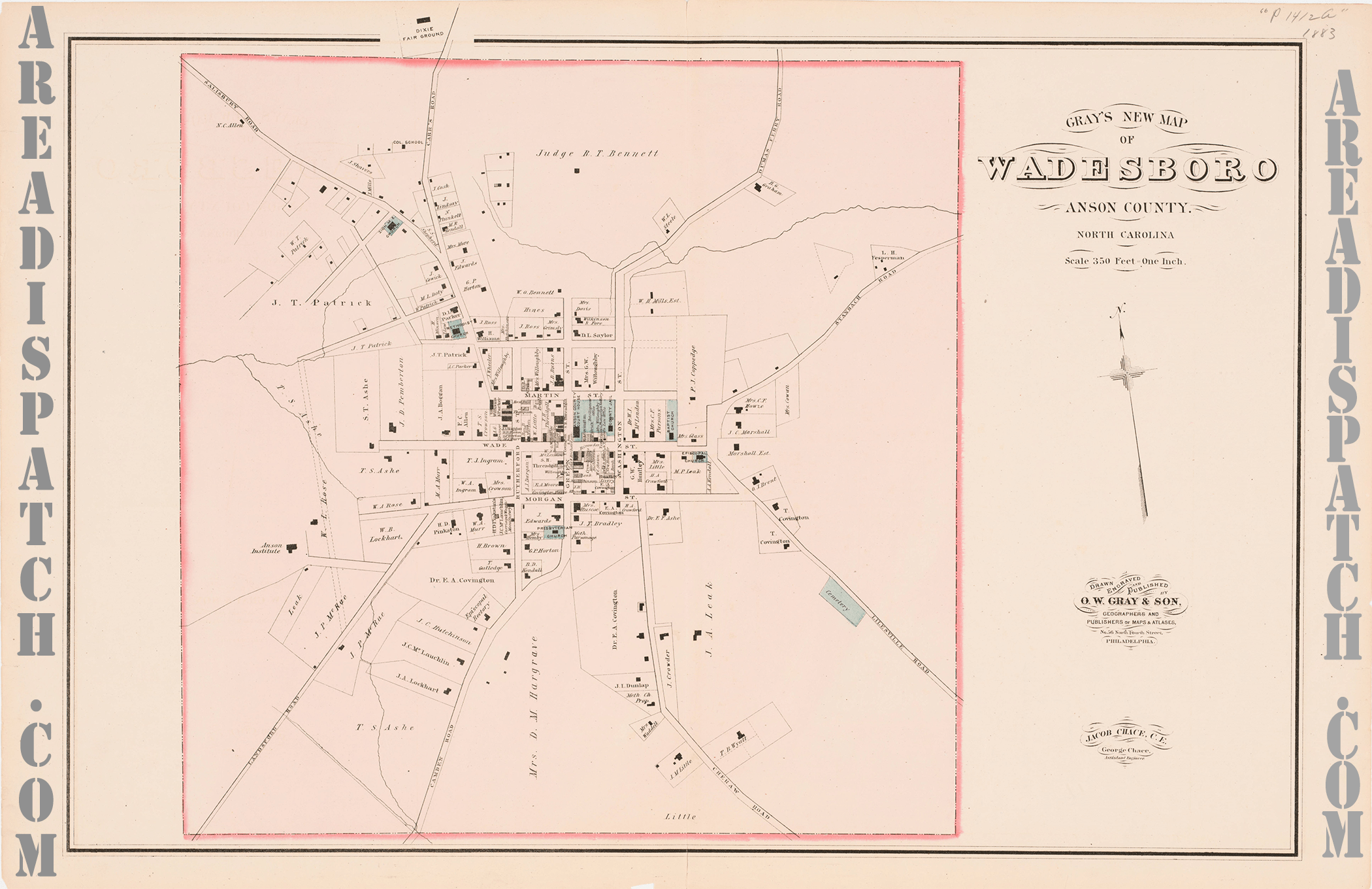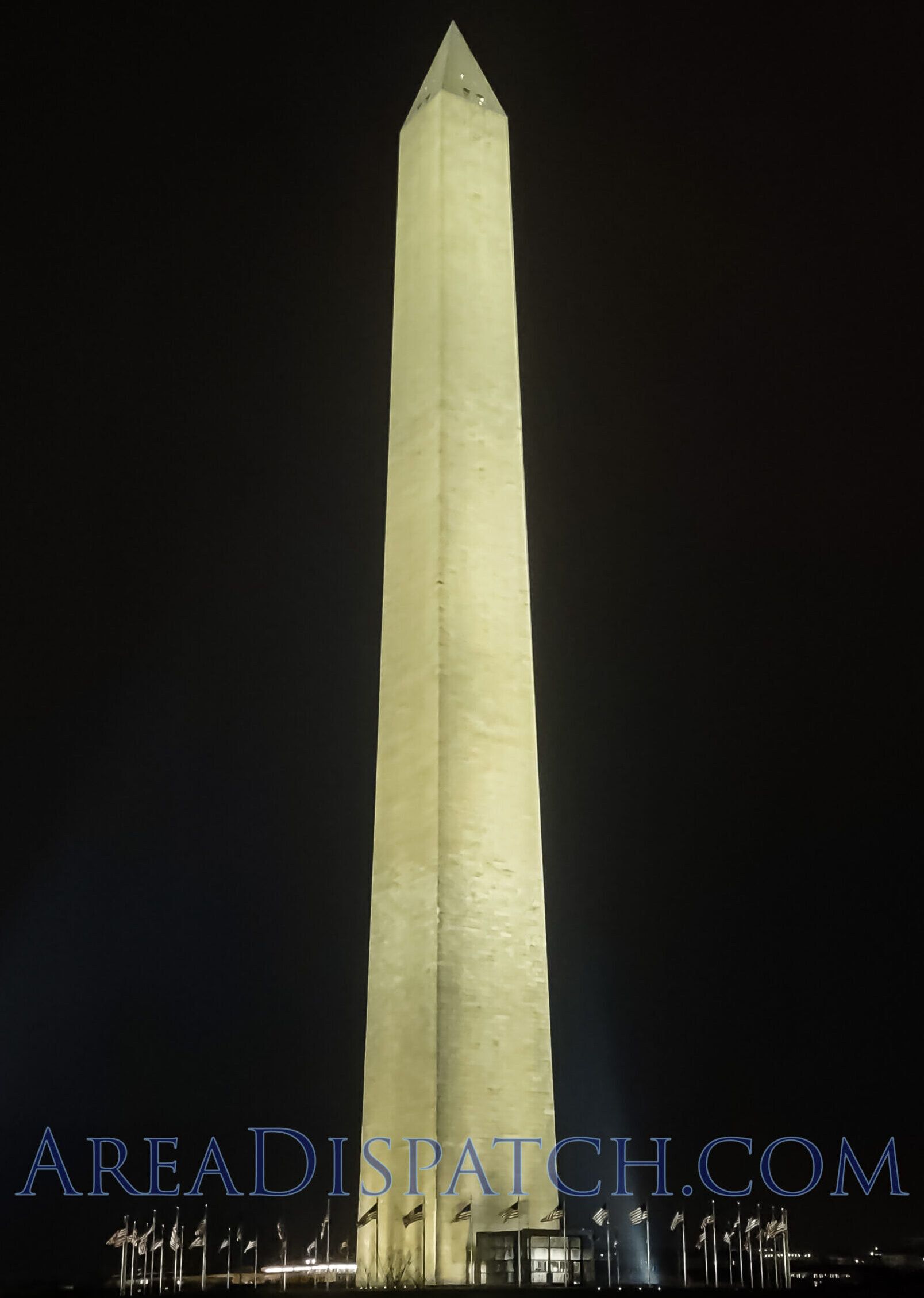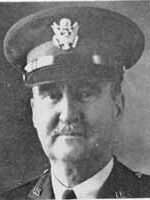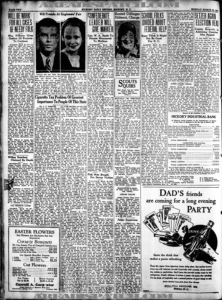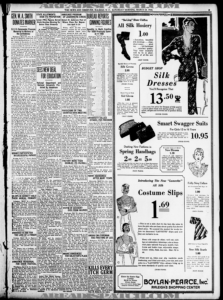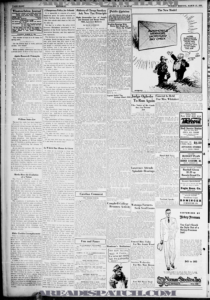The Charlotte Observer advertised beforehand
and reported on the events of the ceremony
more than any other NC newspaper,
but they aren’t sourced in the Commemorative Landscapes profile.
Only the questionably ever existing Anson News’ first issue is listed on the
state profile for the monument, maintained by the UNC University Library.
Of course, the Anson News is also the only publication
reporting on the ceremony to include it on the front page.
Take a look at where the Charlotte Observer tucked it
away into their Sunday paper that had
multiple sections, made up of numerous pages even then.
This was all intentional and you will see the
justification for a portion of the intent, or the motive, below.
We may not even fully understand the implications of this event in history.
Charlotte Observer – September 21, 1934

Charlotte Observer – September 22, 1934

Page TEN (10), in Section 1 of the Sunday,
September 23, 1934 issue of the Charlotte Observer.
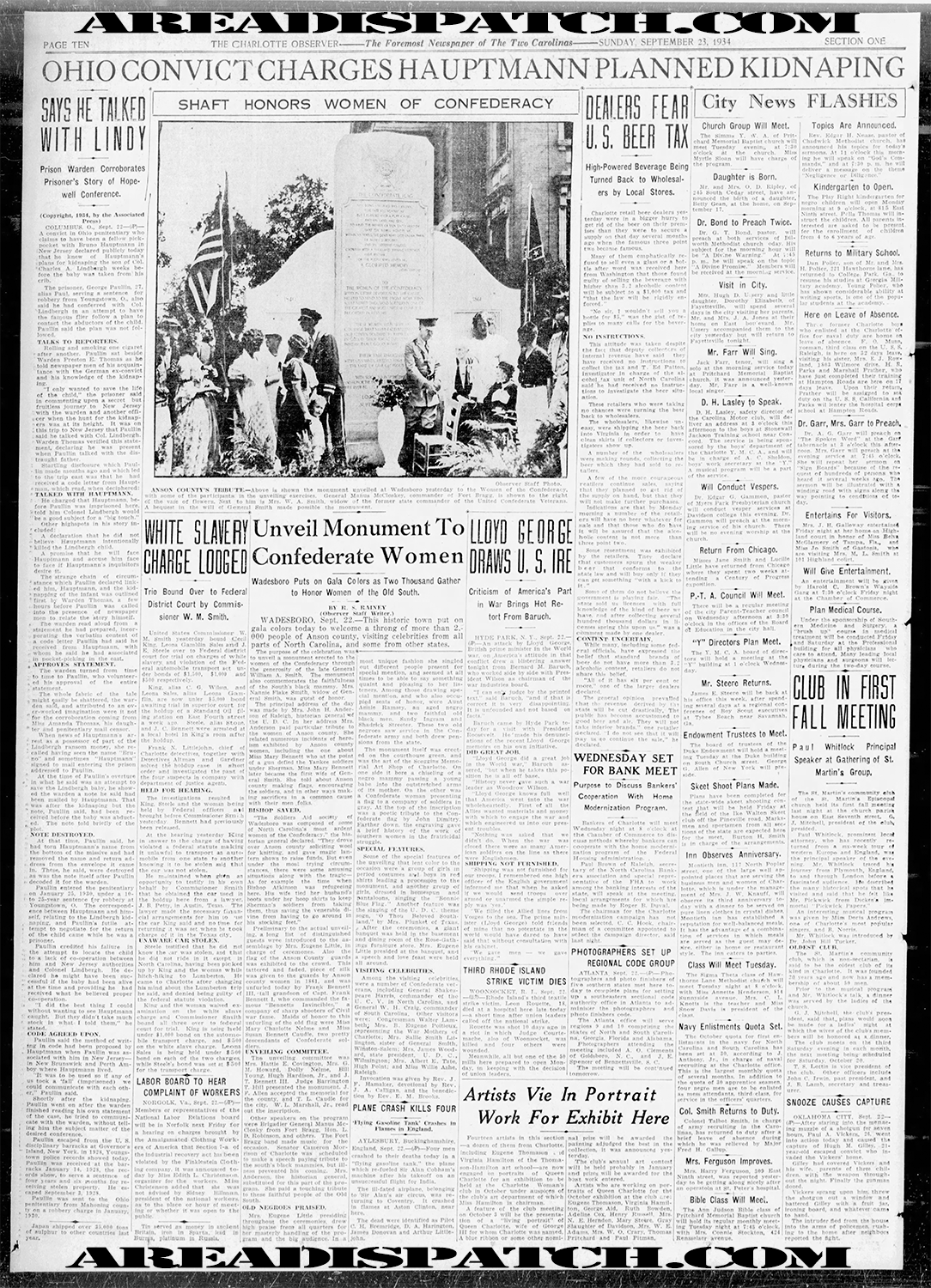

- The blue dot is above Brigadier General Manus McCloskey.
He may have noticed the young boy in the red shirt
who is part of the ensemble for the ceremony. - The green dot is above Mrs. Nancy (Nannie) Flake Smith.
Smith’s second wife is looking at the group on the
opposite side of the monument. - There are three people in the shot looking directly at the photographer.
The small child, the woman staring eerily at the camera on the right side
of the monument, and the young girl standing behind the mother of the small child.
These are only three of the sixteen pictured looking in this direction.
This should be the direction of an additional 1,984 people attending the ceremony.
The three looking directly at the camera, without any others looking in that direction,
indicate there is only a photographer standing in this direction. - The current vase is different than the one pictured.
- Analyzing the photograph and its layers does not show anyone behind the monument on either side.
- There were not 2,000 in attendance.
- The yellow dots are youth dressed in ‘period’ attire with the males in red shirts and the females in
homespun dresses, pantaloons, and what appears to be blackface. The male opposite the monument
from the female youth appears to be in blackface, as well. - “On September 23, after President Roosevelt himself implored the striking workers to return to the mills,
the strike ended. The UTW made no gains through the strike, which left the union with only nugatory
influence for the rest of the Depression.”

In Summary:
We aren’t able to determine if the ceremony was coordinated on the
final day of the Great Textile Strike of 1934 and directed at the win from the strike,
or if it was purely to tarnish the reputation of General McCloskey.
We will continue searching for clarification and keep everyone updated.
That would imply communications at high levels. On Labor Day (Sept. 3),
65,000 textile workers walked off the job on strike in an attempt to be compensated decent wages
for their work, for reasonable workloads, and accommodations like breaks.
The strikers were opposed to what they called the ‘stretch out’
where they were not given restroom or meal breaks, they took on the duties
normally performed by previously laid off employees, and work conditions were unfavorable.
It was 1934 and they were five years into the Great Depression that we eventually recovered from
because of World War 2 putting the country back to work. We didn’t enter World War 2 until December 1941.
General McCloskey organized the Civilian Conservation Corps in North Carolina
that provided work for young men in work camps. It was an effort by Roosevelt
that was passed through Congress to provide conservation jobs for unemployed men
between 18 and 25 in ‘semi-military’ work camps, normally in rural areas.
That’s the reason he’s at this ceremony, this was meant to damage his reputation.
McCloskey was later the superintendent of Cook County Hospital in Chicago,
and his son was in the West Point Class of 1924. He also reached the rank of Brigadier General.
Brigadier General Manus McCloskey, the father, retired from the US Army on April 30, 1938.
The malevolent assault on McCloskey’s reputation doesn’t appear to have been successful
with what was said about McCloskey by most and his life following retirement from the Army.
The Civilian Conservation Corps greatly benefited young black men with the conservation work,
and this might have been the reason for the character assault.

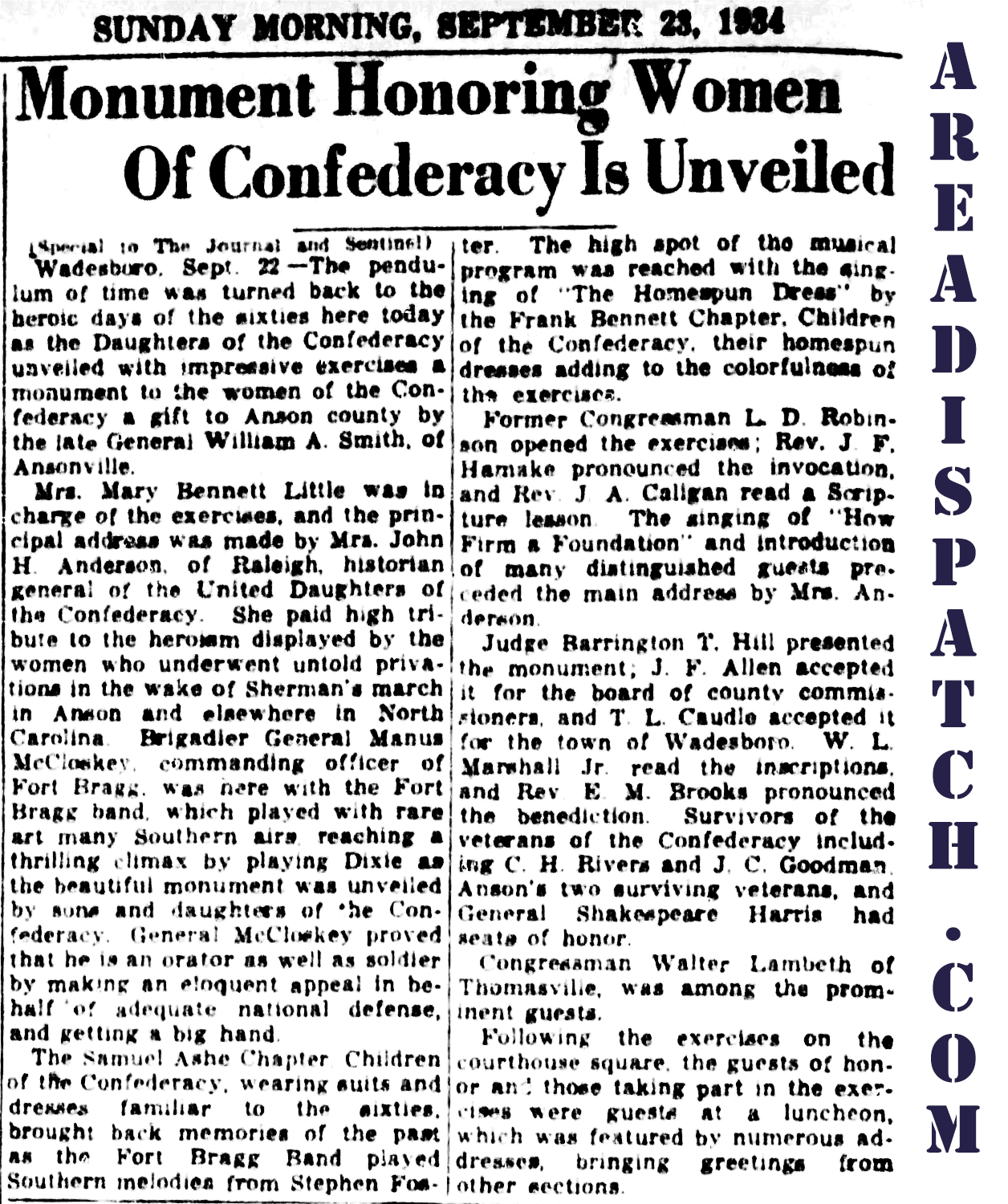
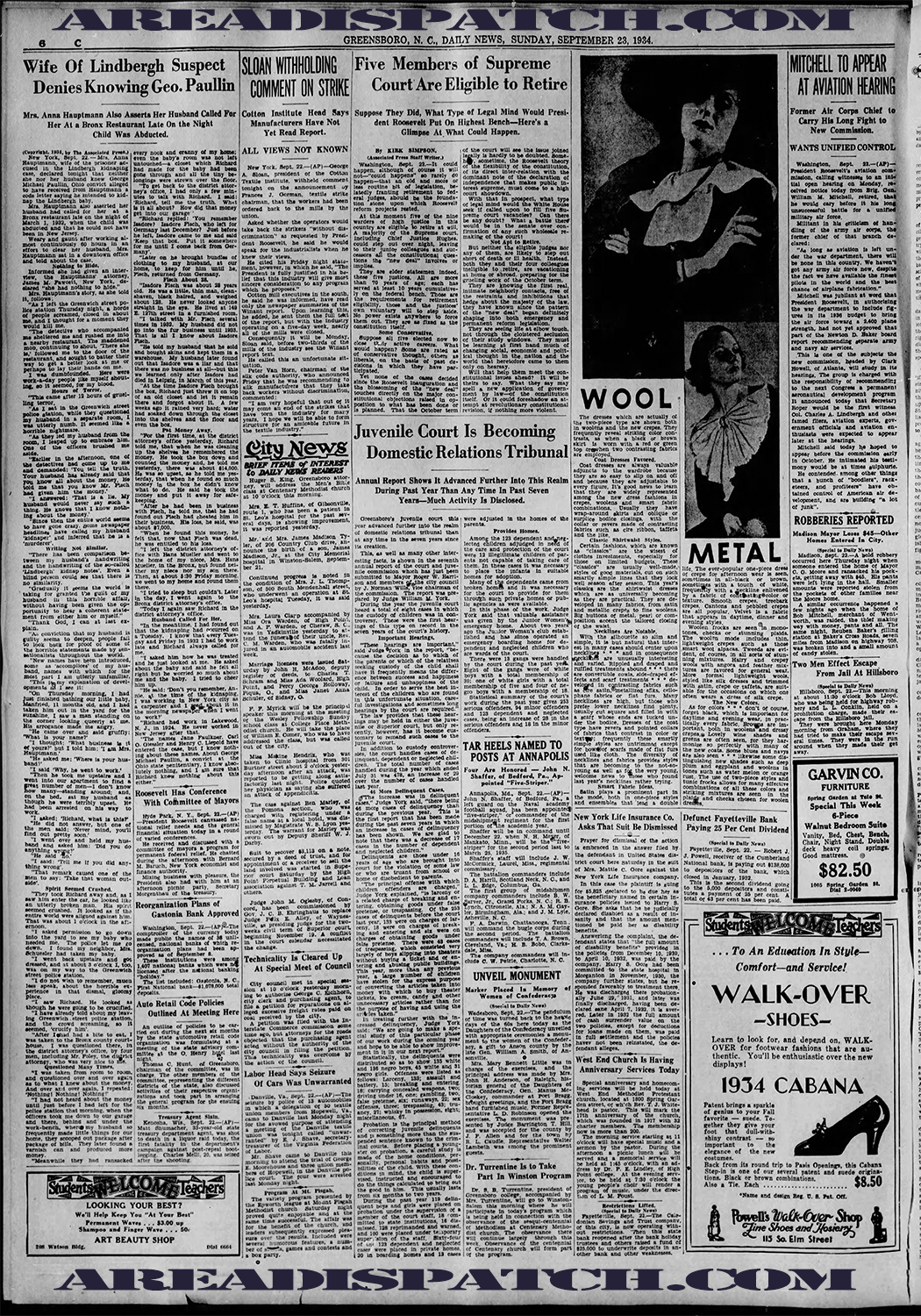


The opinion piece above:



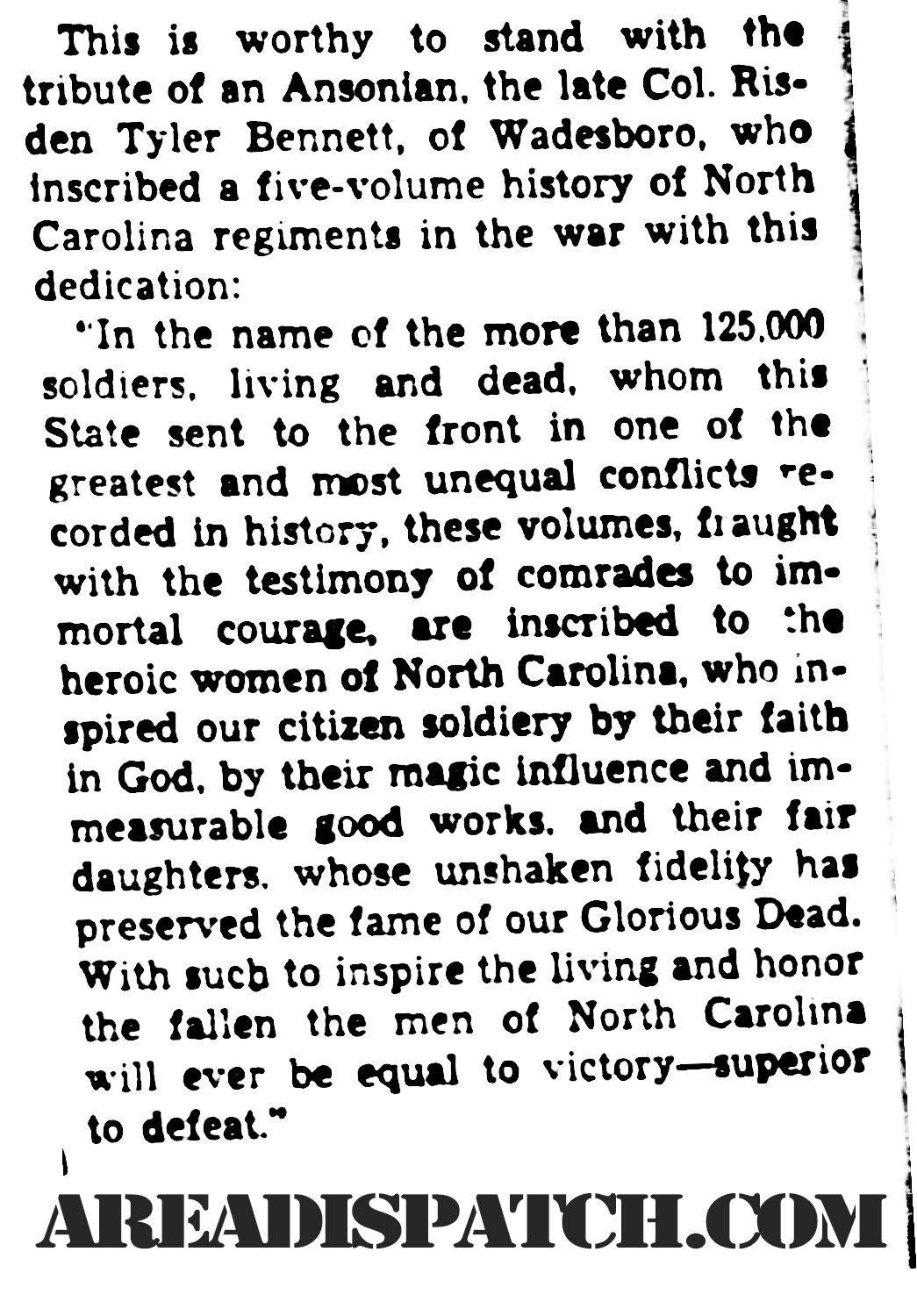
From the NCPedia article on R.T. Bennett:
“Risden Tyler Bennett, Confederate colonel, congressman, and superior court judge, was born in Anson County, the son of Nevil and Catherine Harris Bennett. He attended Gouldsfork Academy near his home and was graduated from Anson Institute, Wadesboro. He enrolled briefly at The University of North Carolina but withdrew and went to the West, where he lived a varied life, including some time spent with Indians. He wanted to remain in the West, but his guardian, George Little, sent him fare and insisted that he return. He attended Davidson College in 1859 and afterward studied at Cumberland University and Lebanon Law School. His law study was completed under Judge Richmond M. Pearson, and he began practice in 1860. He was an ardent believer in states’ rights and enrolled in the Anson Guards in 1861, attaining the rank of colonel of the Fourteenth Regiment, N.C. troops. He was wounded at Gettysburg.”
Bennett was apparently wounded several times and the one at Gettysburg compelled him to receive his last rites on the battlefield. Something curiously rarely mentioned is that he was also a POW held at Fort Delaware in Delaware for several months until he was part of a prisoner exchange a few months before the war ended. He spent just one year at Chapel Hill due to what some claim was a hazing incident. He also only spent one year at Davidson, then finished in Lebanon, TN. This Confederate Colonel was a Judge, a Superior Court Judge, a State Representative, and the only US Congressman from North Carolina to ever be elected by a statewide vote, not within the congressional district. It allowed him to capitalize on the statewide white supremacy vote that still held an edge in state politics after the 15th Amendment.
Interestingly, there are no business initiatives mentioned anywhere about RT Bennett. He came from a good family, but there were limits to the wealth he came from. RT Bennett was able to amass immense wealth before 1883 when land mapping of Wadesboro shows that RT Bennett owned the majority of the North side of Wadesboro. Please see map below:
